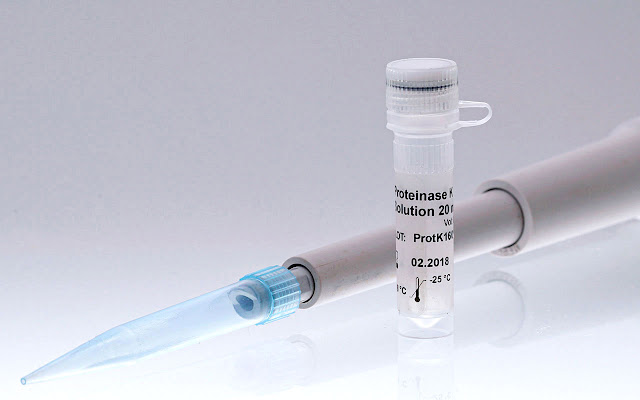Proteinase K Digests Proteins In Clinical Tissue Samples And Removes Mitochondria From Liver Cells
 |
| Proteinase K |
Serine protease, also referred to as Proteinase K, is a proteolytic enzyme that breaks down proteins and eliminates impurities from the synthesis of nucleic acids. In nucleic acid preparations, proteinase K quickly inactivates DNAases and RNases that would otherwise break down DNA and RNA during the purifying process. Proteinase K is used to release nucleic acids from cell lysates, such as those from tissue and cell culture cells, and to digest proteins. It is frequently used to digest contaminating proteins during DNA extraction and to shield nucleic acid from nuclease attack.
The fungus Tritirachium album Limber produces the serine protease Proteinase K. In several chemical reactions, it serves as an enzyme or reagent. In the process of purifying proteins, it breaks down undesired nucleases and creates pure samples of high molecular weight DNA and RNA. Applications for proteinase K include the separation and purification of nucleic acids, the isolation of mitochondria, the eradication of enzymes, and the purification of PCR.
A broad spectrum protease called Proteinase K breaks peptide bonds between aliphatic and aromatic amino acids' carboxylic groups. It is helpful for general protein digestion in biological materials. A fungus called Tritirachium album Limber is used to produce Proteinase K, a highly specific, broad-spectrum serine protease. Depending on the kind of reaction, it is either an enzyme or reagent that, when applied, digests proteins and removes all impurities during the production of nucleic acid.
As a result of proteinase K's prompt deactivation of nuclease activity, DNA and RNA are shielded from degradation during purification. Other uses for proteinase K in molecular biology include enzyme removal, PCR purification, bacterial genome purification, mitochondria isolation, and protein degradation in cell lysate (cell and tissue culture). SDS, EDTA, and ureas all cause proteinase K to become active towards native and denatured proteins. Additionally, it aids in the liberation of nucleic acids and the purification of genomic DNA from bacteria. Because it can break down keratin, a protein found in hair.



Comments
Post a Comment